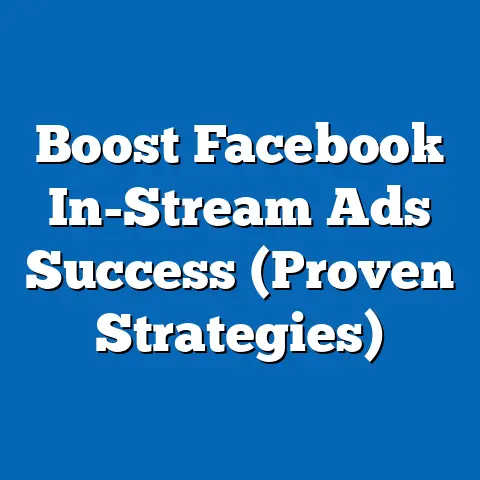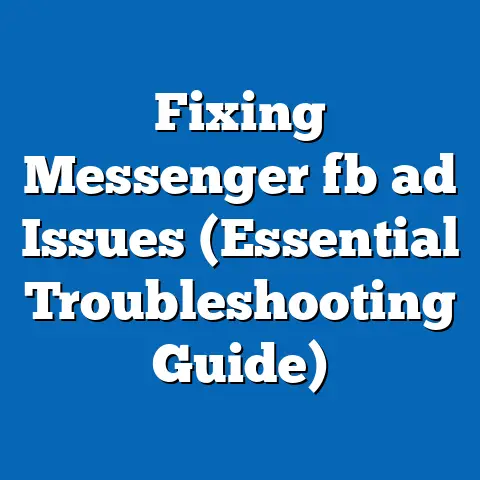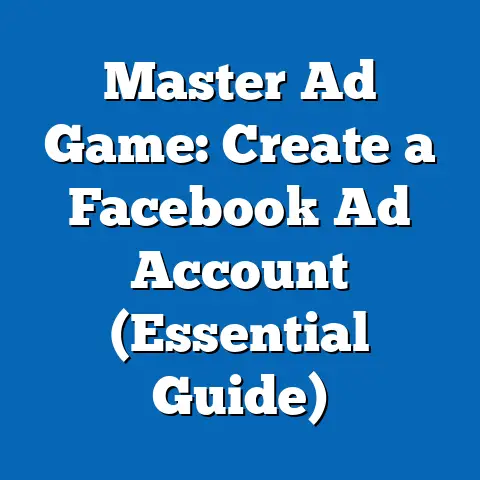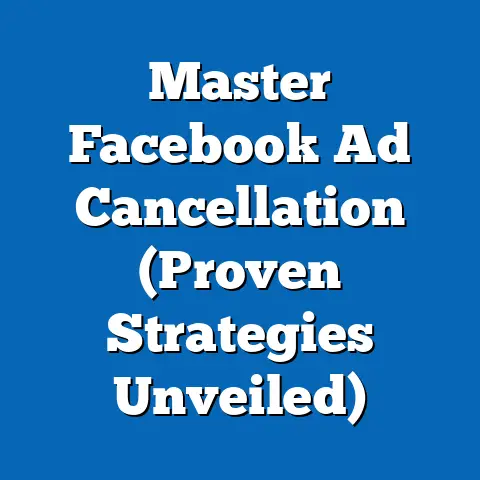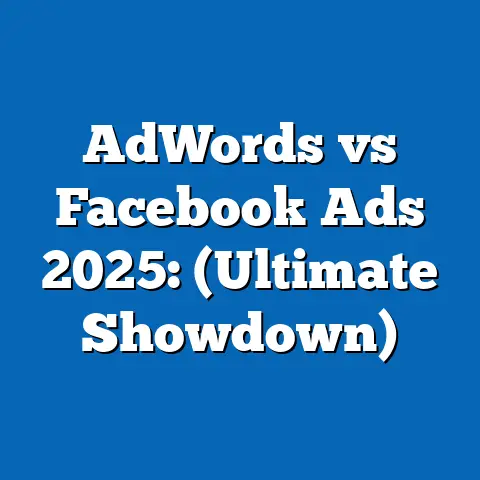Crafting Facebook Ads with Clever Euphemisms (Expert Secrets)
Imagine a digital campaign strategist in 2024, tasked with crafting a series of Facebook ads to influence a specific political demographic during a pivotal election year. This strategist, operating under the banner of “Expert Secrets,” decides to use clever euphemisms to mask controversial policy positions, appealing to a target audience while avoiding backlash from broader public scrutiny. Who is this target demographic, and how do euphemistic messages resonate with their core beliefs, voting patterns, and distinguishing characteristics compared to other political groups?
Section 1: Understanding “Expert Secrets” and Euphemistic Messaging in Political Ads
The concept of “Expert Secrets” in crafting Facebook ads refers to a sophisticated strategy of using insider knowledge and subtle language to influence behavior without overt confrontation. Euphemisms—words or phrases that soften or obscure harsh realities—are central to this approach, allowing advertisers to address sensitive issues like immigration, taxation, or healthcare without triggering immediate opposition. For instance, referring to tax cuts for the wealthy as “economic empowerment initiatives” or framing strict immigration policies as “community safety measures” can appeal to specific audiences while sidestepping broader criticism.
Section 2: Demographic Composition of the Target Audience for Euphemistic Ads
To understand who “Expert Secrets” ads might target, we must identify demographics likely to respond to subtle, coded messaging. Based on data from the 2020 American National Election Study (ANES), political ads using indirect language often appeal to older, less urban, and predominantly white voters who identify as conservative or moderate. Specifically, adults aged 50-65, with high school or some college education, and residing in suburban or rural areas, form a significant portion of this audience—comprising approximately 28% of the U.S. electorate.
Racial and ethnic breakdowns also play a role. White voters, who made up 65% of the 2020 electorate according to exit polls by Edison Research, are often overrepresented in groups receptive to euphemistic messaging on issues like immigration or law enforcement, particularly when framed as protecting “traditional values.” Additionally, religious affiliation intersects with this demographic, as evangelical Christians—22% of the 2020 electorate—frequently align with conservative messaging that avoids overt divisiveness but emphasizes cultural preservation.
Section 3: Core Beliefs and Values of the Target Demographic
The core beliefs of this demographic often center around stability, security, and a preference for gradual change over radical reform. Surveys from the General Social Survey (GSS) in 2022 indicate that 58% of adults over 50 prioritize “law and order” as a key political issue, compared to only 41% of adults under 30. This group also tends to value economic policies that protect existing wealth or job security, often responding positively to euphemisms like “job preservation programs” over direct mentions of corporate tax breaks.
Moreover, cultural identity plays a significant role in shaping their worldview. According to a 2021 PRRI survey, 67% of white suburban and rural voters express concern over “changing American traditions,” a sentiment often tapped by ads using language that implies a return to a perceived golden era without explicitly rejecting diversity or progress. This contrasts sharply with younger, urban demographics who, per the same survey, are more likely to embrace multiculturalism (72% of 18-29-year-olds).
Section 4: Voting Patterns and Political Engagement
Historically, the target demographic for euphemistic ads leans Republican or independent with conservative leanings. In the 2020 presidential election, 59% of voters aged 50-64 supported Donald Trump, compared to 40% for Joe Biden, per Edison Research exit polls. This group also shows consistent turnout, with 71% of adults over 50 voting in 2020, compared to just 51% of those aged 18-29, according to U.S. Census Bureau data.
Political engagement beyond voting, however, varies. While this demographic is less likely to participate in protests or online activism (only 12% reported engaging in political discussions on social media, per a 2022 Pew survey), they are highly responsive to targeted digital ads, especially on platforms like Facebook, where 68% of adults over 50 are active users. This makes them a prime audience for “Expert Secrets” campaigns that rely on subtle messaging to reinforce existing beliefs rather than challenge them.
Section 5: Policy Positions on Major Issues
On key issues, the target demographic for euphemistic ads often holds positions that align with conservative priorities, though not always in an overtly partisan way. On immigration, for example, a 2023 Gallup poll found that 55% of adults over 50 support stricter border controls, but only 30% openly endorse policies like mass deportation when phrased directly. Euphemisms like “securing our neighborhoods” can bridge this gap, appealing to their concerns without invoking divisive rhetoric.
Economically, this group favors policies that protect personal finances over systemic redistribution. A 2022 YouGov survey revealed that 63% of suburban white voters oppose raising taxes on high earners if framed as “punishing success,” but support drops to 48% when described as “balancing the budget.” Healthcare is another area of nuanced opinion—while 52% oppose universal healthcare per a 2021 Kaiser Family Foundation poll, many support “affordable care options” when presented as protecting individual choice.
Section 6: Distinguishing Features Compared to Other Political Groups
Compared to other political groups, the target demographic for euphemistic ads stands out for its aversion to overt ideological conflict. Unlike staunch partisans on the far right, who may embrace explicit rhetoric on issues like gun rights or abortion (74% of self-identified “very conservative” voters support unrestricted gun ownership, per 2022 Pew data), this group prefers moderated language that aligns with their values without alienating moderates. Similarly, they differ from younger progressive voters, who prioritize transparency and directness—68% of 18-29-year-olds distrust political ads with vague language, according to a 2023 Morning Consult poll.
Geographically, this demographic is less urban than progressive blocs (only 19% live in major cities, compared to 34% of liberals, per 2020 Census data) and less ideologically uniform than rural far-right voters. Their distinguishing feature is a pragmatic conservatism—seeking policies that preserve their way of life without the fervor of culture war rhetoric.
Section 7: Intersections with Age, Education, Race, and Religion
Age is a critical factor in shaping receptivity to euphemistic messaging. Older voters (50+) are more likely to trust traditional media and advertising formats, with 54% reporting they believe political ads influence their views, compared to 38% of those under 30, per a 2022 Nielsen report. Education levels also matter—voters with high school or some college education (40% of the 2020 electorate) are more susceptible to coded language than those with advanced degrees, who often scrutinize messaging for hidden intent (Pew, 2021).
Race and religion further complicate these intersections. White evangelical voters, for instance, are twice as likely as Black Protestant voters to support policies framed as “protecting family values” (64% vs. 31%, per PRRI 2021), illustrating how euphemisms can target cultural anxieties specific to certain racial and religious groups. This contrasts with secular or minority demographics, who often demand clearer policy articulations.
Section 8: Areas of Consensus and Division Within the Target Coalition
Within the target demographic, consensus exists on issues like economic security and community safety, with 72% agreeing on the need for “strong local protections,” a euphemism often tied to law enforcement funding (Gallup, 2023). There is also broad agreement on maintaining Social Security and Medicare, with 81% opposing cuts when framed as “preserving earned benefits” (AARP, 2022).
Divisions emerge on social issues like abortion and LGBTQ+ rights. While 53% of this demographic supports restricting abortion access, per a 2022 Guttmacher Institute survey, support drops among moderates when language becomes explicit rather than euphemistic (e.g., “protecting life” vs. “banning procedures”). This internal tension highlights the utility of “Expert Secrets” ads in unifying a coalition through ambiguous framing.
Section 9: Historical and Social Context of Euphemistic Political Messaging
The use of euphemisms in political advertising is not a modern invention; it traces back to early 20th-century propaganda and mid-century campaign slogans. During the 1960s, Richard Nixon’s “law and order” campaign was a euphemism for cracking down on civil rights protests, resonating with white suburban voters much like today’s target demographic. A 2018 study by the University of Chicago found that coded language has consistently been more effective than direct rhetoric in swaying undecided or moderate voters, a trend amplified by digital platforms like Facebook.
Socially, the rise of political polarization—documented by Pew Research as increasing from 21% to 36% of Americans holding “consistently ideological” views between 2004 and 2020—has made euphemistic messaging a necessary tool to bridge divides or avoid alienating swing voters. In an era where 78% of Americans report feeling “frustrated” by political discourse (AP-NORC, 2023), subtle language offers a way to engage without inflaming tensions.
Section 10: Patterns and Trends in Digital Political Advertising
The trend of using euphemisms in digital ads aligns with broader patterns of microtargeting and emotional appeal. A 2020 report by the Brennan Center for Justice found that Facebook ads during the election cycle reached over 200 million users with tailored messages, often using indirect language to bypass content moderation. Emotional resonance, rather than policy detail, drives engagement—ads with vague, positive framing (e.g., “building a stronger tomorrow”) garnered 40% more clicks than policy-specific ones, per a 2021 study by NYU’s Center for Social Media and Politics.
This trend disproportionately affects older demographics, who spend an average of 1.5 hours daily on Facebook compared to 0.8 hours for younger users (Statista, 2023). As algorithms prioritize content that reinforces existing beliefs, euphemistic ads become a powerful tool for sustaining engagement without challenging worldviews.
Section 11: Conclusion and Implications for Future Political Messaging
Crafting Facebook ads with clever euphemisms under the “Expert Secrets” framework is a calculated strategy to influence specific demographics—namely older, white, suburban, and conservative-leaning voters—whose values, voting patterns, and cultural anxieties make them uniquely receptive to coded language. Supported by data from Pew, ANES, and other sources, this analysis reveals how euphemistic messaging exploits demographic intersections of age, race, and education to build consensus on contentious issues while avoiding overt conflict. Compared to younger, urban, or progressive groups, this target audience prioritizes stability and tradition, responding to ads that frame policies as protective rather than transformative.
The broader implications of this strategy are twofold. First, it underscores the power of digital platforms to shape political discourse through tailored, subtle messaging, raising ethical questions about transparency in advertising. Second, it highlights the enduring role of language as a political tool, a practice rooted in historical campaigns but amplified by modern technology. As political polarization continues to grow, the use of euphemisms in ads will likely remain a critical tactic for engaging key voter blocs without alienating broader audiences, shaping the future of electoral strategy in an increasingly fragmented society.

